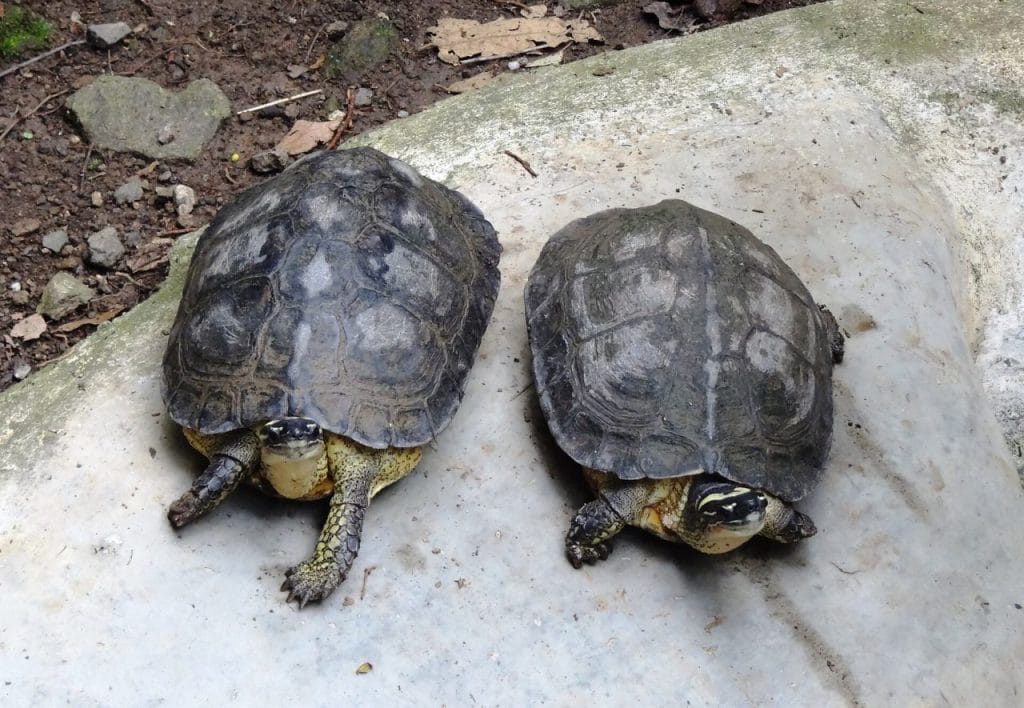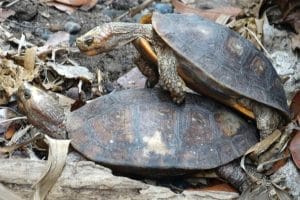Rhinoclemmys melanosterna (Colombian wood turtle)
Home > Turtle Database > Rhinoclemmys melanosterna (Colombian wood turtle)

Rhinoclemmys melanosterna, commonly known as the Colombian wood turtle, is a semi-aquatic species found in the lowland rainforests and wetlands of South America. It is known for its distinctive dark markings and adaptability to both terrestrial and aquatic environments.
Native To These Regions
Antioquia (Colombia), Cauca (Colombia), Chocó (Colombia), Esmeraldas (Ecuador), Nariño (Colombia), Valle del Cauca (Colombia)Native Turtle Species Map – Find Turtles by Region
Scientific Classification
Kingdom: Animalia
Phylum: Chordata
Class: Reptilia
Order: Testudines
Family: Geoemydidae
Genus: Rhinoclemmys
Species: Rhinoclemmys melanosterna
Common Names
Colombian Wood Turtle
Black-breasted Wood Turtle
This Hilarious Turtle Book Might Know Your Pet Better Than You Do
Let’s be real—most turtle care guides feel like reading a textbook written by a sleep-deprived zookeeper.
This one’s not that.
Told from the snarky point of view of a grumpy, judgmental turtle, 21 Turtle Truths You’ll Never Read in a Care Guide is packed with sarcasm, sass, and surprisingly useful insights.
And hey—you don’t have to commit to the whole thing just yet.
Grab 2 free truths from the ebook and get a taste of what your turtle really thinks about your setup, your food choices, and that weird plastic palm tree.
It’s funny, it’s honest, and if you’ve ever owned a turtle who glares at you like you’re the problem—you’ll feel seen.
Identification
Description
The Colombian wood turtle has an elongated carapace with dark brown to black markings, often featuring a slightly raised keel along the midline. The plastron is typically dark-colored, giving it the “black-breasted” name. The limbs are sturdy, with some webbing between the toes, suited for both swimming and walking on land.
Sexual Dimorphism
Males tend to have a longer and thicker tail, while females have a broader, more rounded carapace. Males may also exhibit a concave plastron, aiding in mating.
Check more turtles from the Rhinoclemmys genus
Native Origin and Distribution
Geographical Range
This species is primarily found in Colombia, Ecuador, and parts of Panama. It inhabits lowland tropical regions with access to both freshwater bodies and forested areas.
Preferred Habitat
Colombian wood turtles prefer humid rainforests, swamps, and slow-moving freshwater streams. They are often found near bodies of water but can also venture onto land for foraging and basking.
Behavior
Feeding Habits
Omnivorous in nature, they consume a varied diet that includes fruits, leaves, insects, and small aquatic organisms. They forage both in water and on land.
Predators
Natural predators include birds of prey, large fish, and mammals such as raccoons. Hatchlings and juveniles are more vulnerable to predation than adults.
Reproduction
Breeding Season
Breeding typically occurs during the wet season when environmental conditions are favorable for egg incubation.
Reproductive Method
Females lay small clutches of eggs in shallow nests, usually in sandy or soft soil near water sources. Incubation lasts several months, with hatchlings emerging fully independent.
Conservation
Extinction Status
Least Concern.
Threats
Deforestation, pollution, and illegal pet trade impact their populations. Encroachment on wetland habitats due to agriculture and development also reduces their natural range.
Conservation Measures
Some protected areas in Colombia and Ecuador provide refuge for this species. Conservation efforts focus on habitat preservation and reducing poaching for the pet trade.
Economic Importance
This species is occasionally kept as a pet, but its role in maintaining healthy ecosystems through seed dispersal and insect population control is more significant.
Interesting Facts
Colombian wood turtles can tolerate brackish water for short periods, unlike many other freshwater species. They are highly adaptable, often seen foraging in both forested and open areas. Some individuals exhibit a strong homing instinct, returning to familiar territories after being displaced.

About Author
Muntaseer Rahman started keeping pet turtles back in 2013. He also owns the largest Turtle & Tortoise Facebook community in Bangladesh. These days he is mostly active on Facebook.














